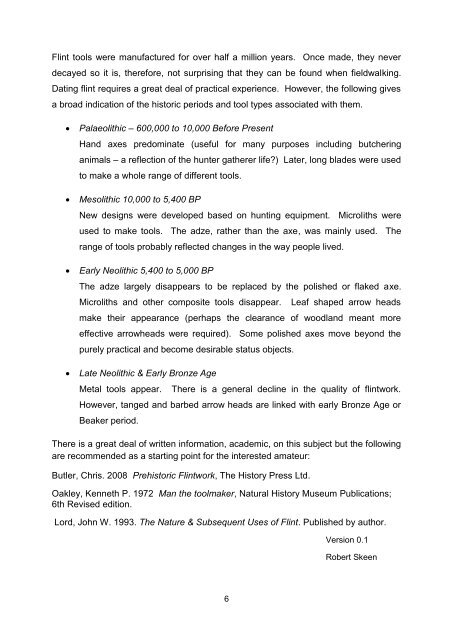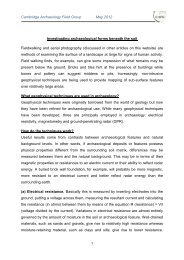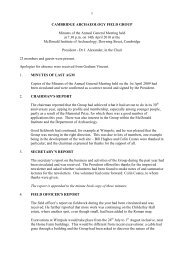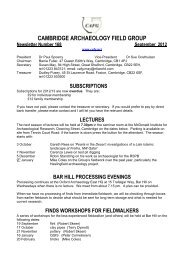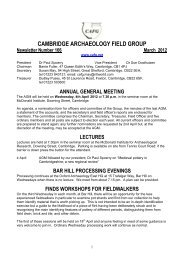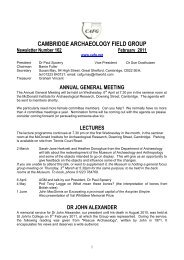Recognising man-made flints - Cambridge Archaeology Field Group
Recognising man-made flints - Cambridge Archaeology Field Group
Recognising man-made flints - Cambridge Archaeology Field Group
You also want an ePaper? Increase the reach of your titles
YUMPU automatically turns print PDFs into web optimized ePapers that Google loves.
Flint tools were <strong>man</strong>ufactured for over half a million years. Once <strong>made</strong>, they never<br />
decayed so it is, therefore, not surprising that they can be found when fieldwalking.<br />
Dating flint requires a great deal of practical experience. However, the following gives<br />
a broad indication of the historic periods and tool types associated with them.<br />
Palaeolithic – 600,000 to 10,000 Before Present<br />
Hand axes predominate (useful for <strong>man</strong>y purposes including butchering<br />
animals – a reflection of the hunter gatherer life?) Later, long blades were used<br />
to make a whole range of different tools.<br />
Mesolithic 10,000 to 5,400 BP<br />
New designs were developed based on hunting equipment. Microliths were<br />
used to make tools. The adze, rather than the axe, was mainly used. The<br />
range of tools probably reflected changes in the way people lived.<br />
Early Neolithic 5,400 to 5,000 BP<br />
The adze largely disappears to be replaced by the polished or flaked axe.<br />
Microliths and other composite tools disappear. Leaf shaped arrow heads<br />
make their appearance (perhaps the clearance of woodland meant more<br />
effective arrowheads were required). Some polished axes move beyond the<br />
purely practical and become desirable status objects.<br />
Late Neolithic & Early Bronze Age<br />
Metal tools appear. There is a general decline in the quality of flintwork.<br />
However, tanged and barbed arrow heads are linked with early Bronze Age or<br />
Beaker period.<br />
There is a great deal of written information, academic, on this subject but the following<br />
are recommended as a starting point for the interested amateur:<br />
Butler, Chris. 2008 Prehistoric Flintwork, The History Press Ltd.<br />
Oakley, Kenneth P. 1972 Man the toolmaker, Natural History Museum Publications;<br />
6th Revised edition.<br />
Lord, John W. 1993. The Nature & Subsequent Uses of Flint. Published by author.<br />
6<br />
Version 0.1<br />
Robert Skeen


